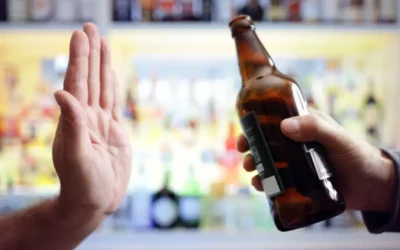Content
Large-bodied people will require more alcohol to reach insobriety than lightly built people.[4] Thus men, being larger than women on average, will typically have a higher alcohol tolerance. The alcohol tolerance is also connected with activity of alcohol dehydrogenases (a group of enzymes responsible for the breakdown of alcohol) in the liver, and in the bloodstream. After alcohol is swallowed, it is absorbed primarily from the small intestine into the veins that collect blood from the stomach and bowels and from the portal vein, which leads to the liver. From there it is carried to the liver, where it is exposed to enzymes and metabolized…
When you’re whizzing like a donkey every ten minutes, you aren’t just losing water, you’re losing some important nutrients. Depletion of these nutrients can lead to hangover symptoms kicking in while you’re still at the party, dramatically decreasing your drinking abilities and social skills. B vitamins are one of the first things alcohol sucks out of your body.
Cues Associated With Drinking
Past medical and psychiatric history may be relevant, especially in terms of cerebrovascular risk factors, depression, or substance abuse, and a history of tobacco and alcohol intake should also be obtained. Family history is important in dementia and this requires asking about cognitive, psychiatric, or other neurological symptoms in each family member. In the hypothalamic-neurohypophysial model system there is strong evidence that BK channel activity is modulated by ethanol exposure in ways that could underlie chronic tolerance. Twenty-four hours of ethanol exposure results in internalization of some preexisting BK channels in the nerve terminal and a declustering of those that remain (Pietrzykowski et al., 2004). The reorganization of channels is coupled with a change in gene expression that produces replacement channels that are refractory to ethanol. Within minutes after ethanol exposure, expression of the miRNA miR-9 is induced, causing the destruction of slo mRNA splice variants encoding ethanol-sensitive BK channels.

When someone has a high tolerance, they can drink more alcohol without feeling the same effects as someone with a low tolerance. The reason for this is that the body becomes used to the alcohol and how to build alcohol tolerance compensates for it in different ways. The genetic predisposition to alcohol tolerance could contribute to increased alcohol consumption and the risk of alcoholism in the sons of alcoholic fathers.
Use Brain Good
Liver cells have an organelle known as the Smooth Endoplasmic Reticulum (SER), whose job it is to break down nasty substances, such as alcohol and drugs. It’s usually seen that people born into families with a history of alcoholism are more likely to be born with low alcohol sensitivity. Researchers have not been able to identify exactly why this happens, but it often does. In simple words, they possess the ability to go round after round of beers, but show minimal effects.
The most important thing to remember, though, is that you should always drink responsibly, which means pacing yourself and stopping when you or others think you’ve had enough. Alcohol intolerance occurs when your body doesn’t have the proper enzymes to break down (metabolize) the toxins in alcohol. This is caused by inherited (genetic) traits most often found in Asians.
Leave a Reply